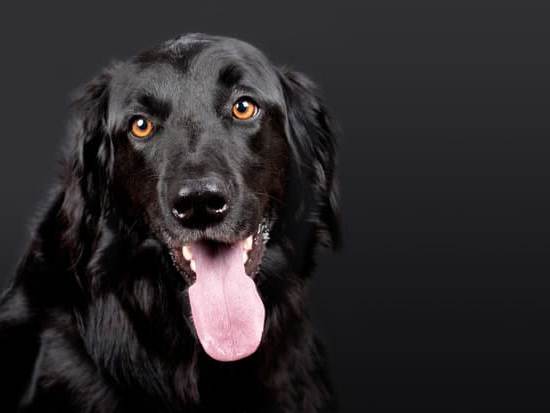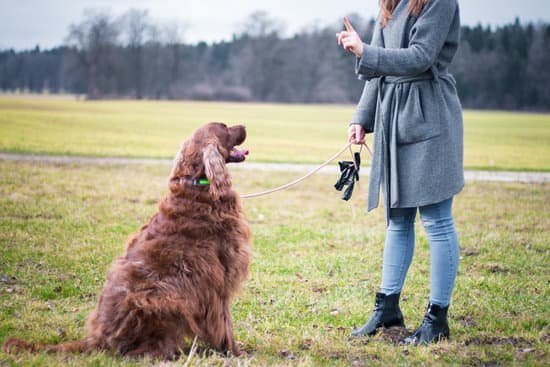Anxiety can affect dogs just like it does humans, leading to unwanted behaviors and decreased quality of life. This article explores how to train anxiety out of a dog, focusing on understanding the underlying causes and manifestations of canine anxiety. It is essential to recognize the signs and symptoms of anxiety in dogs early on to address this issue effectively.
Canine anxiety can stem from various sources, including past trauma, genetics, lack of socialization, or separation anxiety. Dogs may exhibit behaviors such as excessive barking, destructive chewing, or aggression when experiencing anxiety. Understanding how anxiety manifests in dogs is crucial for pet owners to provide the necessary support and training to help their furry companions overcome these challenges.
By creating a safe and calm environment for anxious dogs, pet owners can significantly contribute to reducing their pet’s stress levels. Implementing positive reinforcement training techniques along with counterconditioning and desensitization tools can aid in overcoming anxiety triggers in dogs. Additionally, regular exercise and mental stimulation play a vital role in channeling a dog’s energy in a positive way to promote overall well-being.
Signs and Symptoms of Anxiety in Dogs
Physical Signs of Anxiety
When it comes to spotting anxiety in dogs, there are various physical signs that pet owners can look out for. Some common physical symptoms of anxiety in dogs include trembling or shaking, excessive panting, drooling, pacing, and avoidance behaviors such as hiding or seeking constant reassurance from their owners. Additionally, some dogs may exhibit destructive behaviors like chewing furniture or shoes as a way to cope with their anxiety.
Behavioral Signs of Anxiety
In addition to physical symptoms, there are also behavioral signs that can indicate a dog is experiencing anxiety. Dogs with anxiety may display behaviors such as excessive barking or whining, restlessness, aggression towards other animals or people, or even self-harming behaviors like excessive licking or chewing on themselves. It’s crucial for pet owners to pay attention to these behavioral cues as they can provide valuable insights into the emotional well-being of their furry friends.
Recognizing Anxiety Triggers
Understanding what triggers your dog’s anxiety is essential in managing the condition effectively. Common triggers for anxiety in dogs include loud noises (e.g. thunderstorms, fireworks), separation from their owners, new environments or experiences, and changes in routine.
By identifying these triggers early on, pet owners can take proactive steps to help their dogs cope with stressors and prevent escalating anxiety levels. Remember that knowing how to train anxiety out of a dog involves recognizing these triggers and working towards desensitizing them through positive reinforcement techniques.
The Impact of Anxiety on a Dog’s Behavior and Well-Being
When a dog experiences anxiety, it can have a significant impact on their behavior and overall well-being. Understanding how anxiety manifests in dogs is crucial for pet owners to recognize when their furry friend may be struggling. Some common signs of anxiety in dogs include excessive barking, panting, pacing, trembling, or destructive behaviors like chewing furniture or shoes. It’s essential to address these symptoms promptly to prevent them from escalating.
To help alleviate the impact of anxiety on a dog’s behavior and well-being, creating a safe and calm environment is key. This includes providing a comfortable and secure space for your dog where they can retreat when feeling overwhelmed. Additionally, establishing a consistent routine can help reduce uncertainty and provide structure for anxious dogs. Simple things like regular feeding times, walks, and play sessions can offer reassurance and stability.
In addition to creating a safe environment, positive reinforcement training techniques can be highly effective in managing anxiety in dogs. By rewarding calm and relaxed behavior with treats or praise, you can help your dog associate positive feelings with situations that typically trigger their anxiety.
Consistency is crucial when using this approach, as it reinforces good behavior over time. Additionally, engaging in activities that provide mental stimulation and physical exercise can help channel your dog’s energy in a positive way, reducing stress and promoting overall well-being.
- Establish a consistent routine for your dog
- Provide a comfortable space for your dog to retreat
- Use positive reinforcement training techniques
- Engage in activities that provide mental stimulation and exercise
Creating a Safe and Calm Environment for Anxious Dogs
An anxious dog requires a safe and calm environment to help alleviate their stress and fear. Creating a conducive space for your furry friend can significantly impact their overall well-being and behavior. Here are some tips on how to set up a soothing environment for an anxious dog:
- Comfortable Bedding: Provide your dog with a comfortable bed or crate where they can retreat when feeling overwhelmed. Make sure the bedding is soft and cozy to help them feel secure.
- Quiet Space: Designate a quiet area in your home where your dog can relax without being disturbed by loud noises or commotion. This area should be away from high-traffic areas to provide a sense of peace.
- Safe Haven: Create a safe haven for your dog, such as a den-like space with blankets or towels that have familiar scents. This sanctuary will offer them a place of comfort during stressful times.
In addition to physical aspects, it is essential to consider the emotional well-being of an anxious dog when creating a calming environment. Positive reinforcement techniques and training exercises play a vital role in promoting relaxation and confidence in dogs with anxiety issues.
- Soothing Music: Playing soft music or white noise can help mask external sounds that may trigger anxiety in dogs. Classical music or specially designed pet relaxation tracks can have a calming effect on your furry companion.
- Aromatherapy: Certain scents like lavender or chamomile are known for their relaxing properties and can help reduce stress in dogs. Use essential oil diffusers or calming sprays in the designated area to create a tranquil atmosphere.
- Consistent Routine: Establishing a consistent daily routine with regular feeding times, exercise, and potty breaks can provide structure and predictability for an anxious dog, helping them feel more secure and less anxious.
By incorporating these elements into your dog’s living space and day-to-day routine, you can create an environment that promotes relaxation, reduces anxiety triggers, and supports your furry friend’s emotional well-being. Remember that patience and consistency are key factors in successfully training anxiety out of a dog.
Positive Reinforcement Training Techniques for Anxiety in Dogs
Positive reinforcement training techniques are a fundamental approach when it comes to addressing anxiety in dogs. This method focuses on rewarding desired behaviors instead of punishing unwanted ones. By using positive reinforcement, you can encourage your dog to exhibit calm and confident behavior while reducing their anxiety triggers.
One effective way to train anxiety out of a dog using positive reinforcement is by offering treats or toys as rewards for calm behavior. For example, if your dog typically exhibits anxious behavior when encountering strangers, you can give them treats when they remain relaxed during introductions. Over time, your dog will associate meeting new people with positive experiences, leading to a decrease in their anxiety response.
Consistency is key when implementing positive reinforcement techniques for anxiety in dogs. Make sure to reward your dog every time they display the desired behavior, whether it’s staying calm during a thunderstorm or remaining composed in a crowded environment. By reinforcing these behaviors consistently, you are helping your dog build confidence and learn to manage their anxiety more effectively.
| Positive Reinforcement Training Techniques | Reward-Based Approach |
|---|---|
| Use treats or toys as rewards for desired behavior | Associate positive experiences with triggers |
| Be consistent in rewarding calm behavior | Helps build confidence and manage anxiety effectively |
Counterconditioning and Desensitization
To begin implementing counterconditioning and desensitization, it is essential to identify the specific triggers that cause anxiety in your dog. This could be loud noises, being left alone, meeting new people, or any other situation that elicits a fearful response from your canine companion. Once you have identified these triggers, you can gradually expose your dog to them in a controlled and positive way.
When implementing these techniques, it is crucial to start at a level where your dog feels comfortable and gradually increase exposure as they become more relaxed. For example, if your dog is afraid of loud noises, you can start by playing recordings of these sounds at a low volume while providing treats or engaging in playtime with them. Over time, you can increase the volume of the recordings while continuing to associate them with positive experiences for your dog.
It is important to note that training anxiety out of a dog takes time, patience, and consistency. Every dog is unique, and progress may vary depending on their individual temperament and past experiences. If you feel overwhelmed or unsure about how to train anxiety out of your dog effectively using counterconditioning and desensitization techniques, don’t hesitate to seek professional help from a veterinarian or canine behaviorist who can provide tailored guidance for your furry friend’s specific needs.
Exercise and Mental Stimulation
Benefits of Exercise for Anxious Dogs
Regular exercise is not only crucial for a dog’s physical health but also plays a significant role in their mental well-being, especially for anxious dogs. Physical activity helps reduce stress and releases endorphins, which can improve your dog’s overall mood and help alleviate anxiety symptoms. Engaging in daily exercise routines can provide an outlet for your dog to release pent-up energy and tension, promoting a sense of calmness.
Choosing the Right Activities
When it comes to exercising an anxious dog, it’s essential to select activities that are not overly stimulating or stressful. Low-impact exercises like leisurely walks, gentle play sessions, or interactive games that focus on mental stimulation can be beneficial for dogs with anxiety. Avoid activities that may trigger their anxiety or make them feel overwhelmed. Consistency is key when incorporating exercise into your dog’s routine to help them build confidence and reduce feelings of unease.
Mental Stimulation Techniques
In addition to physical exercise, providing mental stimulation is equally important in channeling your dog’s energy positively. Mental stimulation can include puzzle toys, training sessions, scent work, or introducing new environments for exploration.
Engaging your dog’s mind not only keeps them occupied but also helps reduce boredom and anxiety levels. By incorporating both physical exercise and mental stimulation into your dog’s daily routine, you can effectively channel their energy in a positive way and aid in training anxiety out of your furry companion.
Seeking Professional Help
Veterinarians can rule out any underlying medical conditions that may be contributing to your dog’s anxiety. They can also recommend appropriate medications or supplements to help manage your dog’s symptoms. Additionally, veterinarians can offer guidance on creating a holistic approach to your dog’s care, taking into account their physical and mental well-being.
Canine behaviorists are professionals trained in understanding and modifying behaviors in dogs. They can assess your dog’s specific triggers for anxiety and develop a behavior modification plan tailored to address these triggers effectively. With their expertise, canine behaviorists can guide you on how to train anxiety out of a dog using positive reinforcement techniques, desensitization strategies, and counterconditioning methods tailored to your pet’s needs.
If you are unsure whether your dog’s anxiety requires professional help, it is always best to err on the side of caution and seek guidance from a veterinarian or canine behaviorist. Remember that each dog is unique, and what works for one may not work for another. By consulting experts in the field, you can ensure that you are providing the best possible care for your anxious furry companion.
Patience and Consistency
Training anxiety out of a dog is a process that requires patience and consistency. It is essential to understand the root causes of your dog’s anxiety, whether it be due to past experiences, genetic predispositions, or environmental factors. By recognizing the signs and symptoms of anxiety in dogs early on, you can address the issue proactively and create a safe and calm environment for your furry companion.
Positive reinforcement training techniques are highly effective in helping dogs overcome anxiety. By using rewards such as treats, praise, and toys to reinforce calm and relaxed behavior, you can help your dog build confidence and reduce their anxious tendencies. Additionally, tools like counterconditioning and desensitization can be valuable in gradually exposing your dog to anxiety triggers in a controlled and positive way.
Regular exercise and mental stimulation are also crucial in managing your dog’s anxiety. Physical activity not only helps release pent-up energy but also promotes relaxation and overall well-being. By engaging your dog in activities they enjoy, you can redirect their focus away from anxious thoughts.
Remember that seeking professional help from a veterinarian or canine behaviorist may be necessary in severe cases of anxiety. With patience, consistency, and the proper guidance, you can successfully train anxiety out of your beloved pet and ensure they lead a happy and fulfilling life.
Frequently Asked Questions
How Do You Stop Anxiety in Dogs?
One way to stop anxiety in dogs is by providing them with regular exercise and mental stimulation. Physical activity can help release pent-up energy and reduce stress levels. Additionally, creating a safe and comfortable environment for your dog can also help alleviate anxiety.
How Do You Break Anxiety in a Dog?
Breaking anxiety in a dog requires patience and a consistent approach. Gradual desensitization to triggers that cause anxiety, along with positive reinforcement training, can help change your dog’s response over time. Seeking guidance from a professional trainer or behaviorist may also be beneficial.
What Are Signs of Anxiety in Dogs?
Signs of anxiety in dogs can manifest in various ways including excessive barking, pacing, panting, trembling, destructive behavior, restlessness, and aggression. Some dogs may also exhibit signs like drooling, excessive licking, or attempting to escape. Recognizing these signs early can help address the underlying issues causing anxiety in your dog.

Welcome to the blog! I am a professional dog trainer and have been working with dogs for many years. In this blog, I will be discussing various topics related to dog training, including tips, tricks, and advice. I hope you find this information helpful and informative. Thanks for reading!





